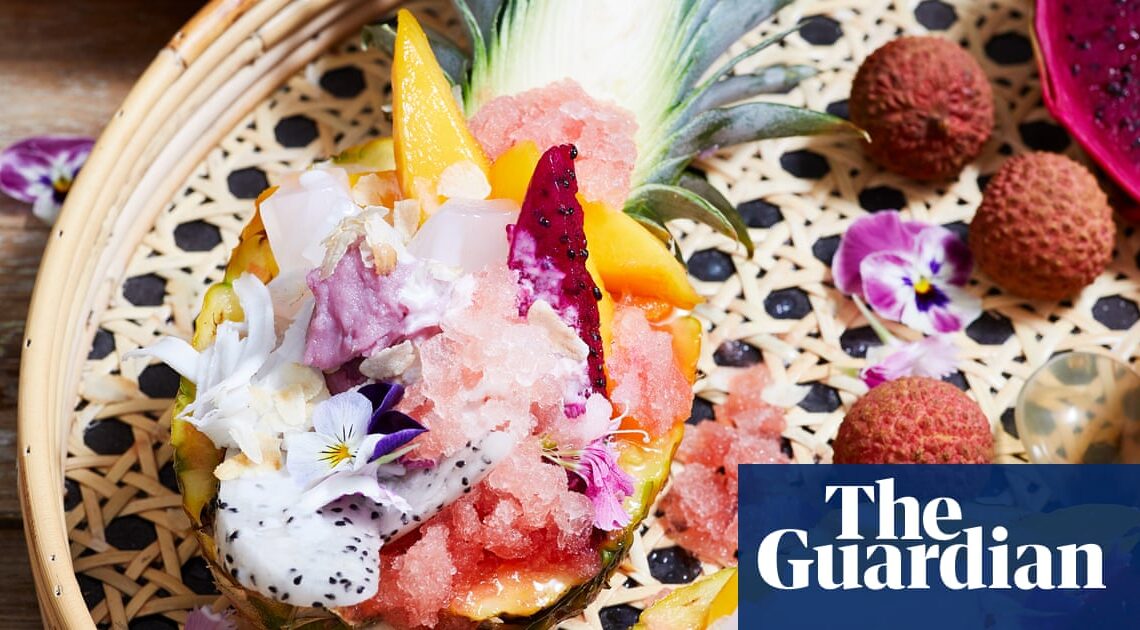For cookbook author Yasmin Newman, food was a gateway to appreciating her culture. Born in Australia to a Filipina mum and an Anglo dad, she grew up eating dishes her mother prepared, such as longsilog (Filipino sausage and fried rice) for breakfast, nilaga (beef soup) for dinner and biko (coconut caramel sticky rice) for snacks in between.
“[With] each bite, I’d absorb the Philippines’ distinctive culture,” Newman says. “Delicious and disarming, yet layered with history and meaning.”
Visits to the Philippines to see family gave her a “strong sense of identity” and pride in her heritage, which she did not see represented in Australian food culture.
“Filipinos are the fifth-largest migrant group in Australia but, as a child and young adult, there were only a handful of Filipino restaurants and very little documented on the cuisine in Australia,” she says.
For 7000 Islands, her 2013 cookbook on Filipino food, Newman travelled the Philippines from “top to tail”, meeting home cooks and local food champions. “At the same time, it highlights how young chefs are cooking in the Philippines, as well as first and second generation migrants in the diaspora just like me, as we proudly shape, share and champion our cuisine,” she says.
A typical Filipino spread
“In the Philippines, food is all about customisation,” Newman says. “You will never find one dish per person as [per] western restaurants or a centrepiece [like a roast]. Instead, tabletops are laden with options. Guests start with an empty plate and choose their own culinary adventure.”
This interactive eating style, she says, commonly features sawsawan (dipping sauces).
“In Filipino, the word sawsawan derives from the verb ‘to dip’,” Newman says. “Watch and you’ll see Filipinos dunking everything from breakfast items through to midnight snacks. Think crispy pork kawali doused in a tart mix of native vinegar and garlic, or crunchy green mangoes used to scoop up sticky bagoong (shrimp paste). Sawsawan can be traced back to the tribal communities of the Philippines’ history, where communal dining was the norm.
“Today, the tradition continues and food is a partnership between cook and eater. An experienced cook expects guests to fine-tune each dish with sawsawan.”
How to eat
There are “no rules” when eating in the Philippines,…
Click Here to Read the Full Original Article at Travel | The Guardian…
